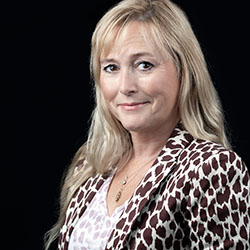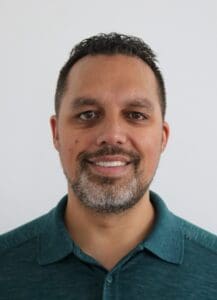
Photo by Joshua Sortino on Unsplash
The healthcare industry traditionally has used site-based clinical trials to assess the efficacy and safety of drugs and medical devices. Data collected from participants in these trials would be evaluated to determine whether the product in question should be approved for commercial use.
In recent years, however, the exponential increase in patient data recorded by digital devices has raised the possibility that real-world data (RWD) and real-world evidence (RWE) may be used to augment clinical trial data.
But what are RWD and RWE? Are they the same thing? And how could they effectively be integrated into clinical trials to produce better outcomes for consumers?
Here’s how the FDA defines RWD and RWE:
Real-world data relate to patient health status and/or the delivery of healthcare routinely collected from a variety of sources. RWD can come from multiple sources such as electronic health records (EHRs), claims and billing activities, product and disease registries, patient-generated data (including in home-use settings), and data gathered from other sources that can inform on health status, such as mobile devices.
Real-world evidence is the clinical evidence regarding the usage and potential benefits or risks of a medical product derived from analysis of RWD. RWE can be generated by different study designs or analyses, including but not limited to, randomized trials, large simple trials, pragmatic trials, and observational studies (prospective and/or retrospective).
I would argue that the FDA’s definitions of RWD and RWE 1) are healthcare provider-centric and 2) shouldn’t be limited only to data that’s routinely collected. Data can be collected in other ways and at intervals that reflect a real-world scenario for patients.
Appropriate analysis + Reliable data = RWE
Thus, RWD is any data that represents the health status of, or any care received by, a person in their normal real-world setting as opposed to a controlled clinical trial setting. And when you apply appropriate analysis to reliable RWD, you will get meaningful evidence in the form of RWE.
Bottom line: If you have the first two elements – appropriate analysis and reliable data – you can produce meaningful evidence, and that evidence can be used in a variety of ways, such as answering research/clinical questions or supporting operational activities of other research studies and clinical trials.
While healthcare so far hasn’t done a great job of integrating this data, over the next five or 10 years we expect to see considerable progress. Soon, for example, we’ll be able to have sensors on inhalers that can indicate the health status of a patient with asthma. By having access to this data, AI algorithms will be able to predict and notify the patient’s allergist or respiratory therapist of a possible exacerbation, and they can intervene by scheduling an appointment to interview, examine and provide care for the patient before the exacerbation occurs.
Biggest users of RWE
There are five specific healthcare stakeholders that benefit from RWE. The largest consumers on a data volume basis would be pharmaceutical and medical device companies that want to assess RWE throughout the drug and product development cycle.
Regulators are the second group of stakeholders that need RWE. These government agencies are tasked with basing their regulatory decisions – which have major implications for both the companies seeking approval and consumers – on tangible evidence.
Health plans also see significant benefits from accessing RWE. Once their products are approved by the FDA (or another regulatory body), drug and medical device companies must generate evidence for payers to decide how much and what kind of authorizations they require for payment.
Providers are a logical group to engage with RWE, upon which clinicians can base diagnosis methods and treatment recommendations.
Healthcare consumers are becoming much more involved with treatment decisions and thus are increasingly interested in RWE to enable evidence-based choices.
RWE in clinical trials
Ensuring data reliability arguably is the biggest challenge in using RWE in clinical trials. Stakeholders must determine both how reliable data is from the point of origin (and there are multiple points of origin) and whether the data remains reliable after being translated, processed, or merged with other data sources. In addition, reliability is somewhat relative depending on the audience for the RWE data and its purpose. Doing an exploratory analysis for internal consumption requires a lower level of rigor than if the evidence were being submitted to a regulatory agency for approval.
A related challenge is interoperability. You need to be able to collect, store and share data, but not all stakeholders have equal digital capabilities. Working with a large academic medical system likely is quite different than working with your local community center to share data. And often information is stored in narrative notes and reports that are hard to digitize.
Ten years ago, it was not uncommon in cases such as high-mortality oncology conditions where a successful single-arm trial – in which participants with a specific condition were given an experimental therapy and then observed over a relatively short period of time – was all that was needed to gain FDA approval. Today, as RWE becomes increasingly diverse and abundant, regulators are looking for more data than what can be provided in a small single-arm or site-based study. This provides context for trial results.
Overcoming RWE issues
To get the most out of RWE, trial sponsors first should conduct a quality assessment of the data collected at each source. This can be a long and difficult process, but if you can’t trust your data, it has no value. As the old adage goes, garbage in – garbage out. No data source is perfect; they all have their limitations, but through a robust qualification process, we can identify data sources that are best fit for our specific research needs.
Once you’ve figured out what you have through an assessment, you try to fill in what you don’t have. This might mean diving into handwritten notes, medical records, charts or natural language processing through machine learning.
Filling in the gaps also might require engaging with patients. Decentralized clinical trial (DCT) platforms are ideal for obtaining data from wherever study participants are located – even in their homes. This means a richer data set collected in a shorter amount of time and at less expense, as well as representing the patient’s perspective.
Another way to avoid problems related to RWE is to have RWD collection added post-treatment with tokenization that would be built into the trial design preapproval and then executed during the drug development life cycle.
Tokenization uses a dataset’s underlying identifying information to create a de-identified key that anonymously links records across disparate data sets. Tokenizing clinical trial data allows RWD to be linked to data from these clinical studies without exposing patient identities; the RWD doesn’t have to be determined or linked right at the beginning of the study. Meaning, this can be a way to ‘future-proof’ your study to be able to link to RWD in the future.
What’s next for real-world evidence in clinical trials?
RWD and RWE show great promise for accelerating the development of safe and effective drugs and medical devices by providing comprehensive real-world evidence. By focusing on data reliability, leveraging decentralized clinical trial platforms, and employing tokenization, trial sponsors can leverage RWD and RWE to improve patient safety and lower trial costs.

Jane Myles has spent her career evolving the clinical research process with a focus on creating a more patient-centric approach. Touting more than a decade leading research trials for some of the pharmaceutical industry heavyweights, today Myles serves as the vice president of clinical trial innovation for Curebase.

Dr. Aaron Kamauu
Dr. Aaron Kamauu is an advisor in the Real-World Data (RWD) space, specifically focusing on leveraging real-world healthcare data to support a variety of clinical research, informatics, clinical trials and drug development activities, including pharmacoepidemiology, outcomes research, protocol design, site identification, data-driven patient recruitment and the use of RWD to support evidence generation and submission to regulatory agencies. Today Dr. Kamauu serves as the managing director of Ikaika Health LLC.